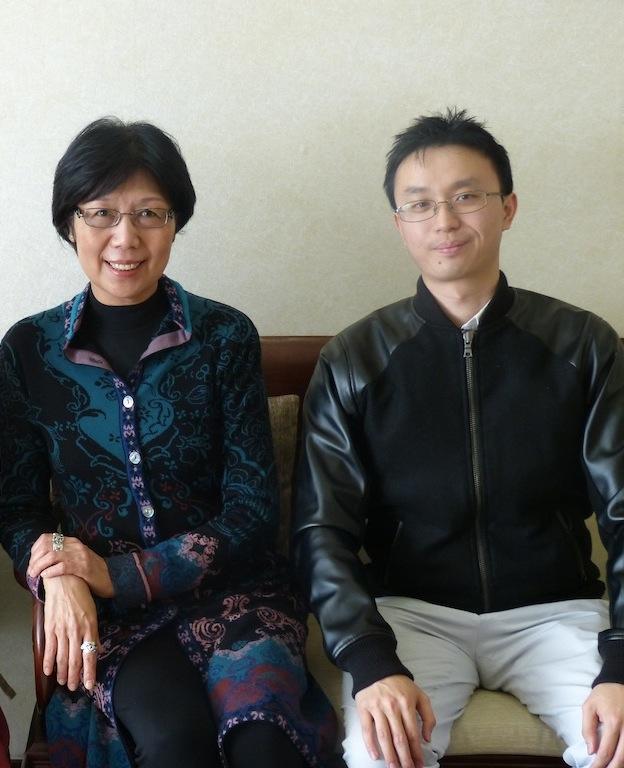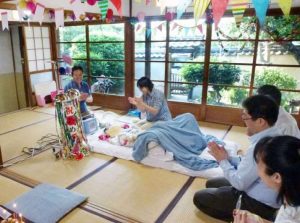
Beauty can serve a spiritual purpose. Presented in the right way, beautiful art can induce in its viewers faith and reverence in the Buddha and his teaching. To present a Buddha image or Buddhist art in this way requires a holistic view of the human experience and a diverse repertoire of interests. This repertoire is needed to help tell stories: for the Buddhist community, the story that needs to be told and protected is the story about Dharma and its presence in the universe. Many Buddhists embody this open-mindedness, this Renaissance attitude. One of them is Lee Mei-yin, Special Researcher of Dunhuang Academy.
I have followed the work of this Renaissance lady closely. In our conversations together, I have tried to understand better the philosophy behind her classes and lectures. Buddhistdoor has been privileged to join her group tours around museum exhibits that she particularly enjoyed or has specialist knowledge in. And in her public lectures, we took careful note of the reasons that moved her to work so tirelessly.
Mrs. Lee read a major in geography and a minor in botany (leading to a teacher musing that she enjoyed cross-discipline study). She underwent a further ten years of academic experience in Chinese history and culture. A stint in gemology helped her discover her talent in archaeology, and thanks to these unique conditions, her classes and seminars are prodigious in their range of interest. They feature Qing-era imperial attire, Dunhuang cave art, material heritage, and East-West artistic exchange, among many more subjects. Here is just one example. She recently has hosted an exhibit at The University of Hong Kong’s University Museum and Art Gallery, Embroidered Identities: Ornately Decorated Textiles and Accessories of Chinese Ethnic Minorities (15th December 2013 – 9th February, 2014). It features the most splendid display of ethnic minority attire from her personal collection. It also has allowed the public to enjoy, for free and often for the first time, a vast range of material culture that brings to life Mrs. Lee’s teaching style. She has pursued this vocation of diverse interests since the 2000’s.
As a faithful Buddhist, Mrs. Lee is aware of the potential to mobilize all these talents and interests in service of the Buddha. Whether it is a lecture on the textiles of the Qing imperial family, a fashion show of Silk Road material culture, or a tour of Dunhuang, it is striking to see how she returns to the same values: conservation, heritage, and beauty. By beauty I do not mean the superficial glamour of the fashion or cosmetics industries. I mean what St. Bernard of Clairvaux once said of 12th century donors when they encountered churches of magnificent design: ‘In this way wealth is derived from wealth, in this way money attracts money, because by I know not what law, wherever the more riches are seen, there the more willingly are offerings made’ [my emphasis].*
Simply put, the more affective religious structures, objects, and artifacts are in their splendor, the more power they have to convert people. And this is exactly what Mrs. Lee sees, as she told me in one instance. A participant in one of her Dunhuang tours had never appreciated the truth of Buddhism, yet after Mrs. Lee’s tour, promised to donate a generous amount to the preservation of Dunhuang’s art. Many non-Buddhists, including some of my own friends, are now exposed to Buddhist teachings thanks to their classes and trips with her.
Mrs. Lee’s appreciation of beauty is affirmed in the Buddhist Vinaya itself. The Mulasarvastivada-Vinaya mentions lavish monasteries in idyllic settings, as well as opulent paintings on walls and cloth. According to Professor Gregory Schopen, the redactors wanted to capture the cultured tastes of donors by appealing to the senses. He also refers to the Mulasarvastivada-Vinaya’s case of Jetavana, which explicitly states that items of great beauty inspire and attract donors. Just like today, fragrant incense would have been used in ancient monastic services, complementing the monasteries’ arsenal of sensory seduction, such as banners and sculptures. Although already a Buddhist, Mrs. Lee had a similar experience in 1999, when she glimpsed a Buddha’s bust in Beijing that moved her so that she made a vow to help as many as possible enjoy Buddhist art.
Many years ago, her preceptor gave advice that has remained with her since: “Express Dharma as form, convert humanity to Dharma. Express Dharma as form, let form give rise to faith.” ( ?H?۪??k?A?H?k???H?C?H?۪??k?A???۵o?ߡC) This counsel deserves some unpacking. The word xiang (??) is an exegetical word in Buddhism: it translates into many words in English, but I interpret it as “form”, “mark”, or “phenomenon”. With xiang, external appearance is being celebrated in the first sentence as an expedient means to spread Dharma. The second pair of this phrase asserts that faith is aroused in the hearts of people once the visible evidence of Dharma can be seen: in other words, beautiful Buddhist art. Buddhism, which preaches the ephemerality of all things, has no difficulty admitting the value of beauty in sharing Buddhist culture. Usually, the emphasis is rightly on inner goodness. But even in serving the Buddha, Mrs. Lee has never been one to take the conventional route.
Mrs. Lee’s approach to promoting Buddhism is very promising. In the long term, it might be more effective than another approach that the Western Buddhist community accepted as conventional wisdom for more than two decades: to pair Buddhist principles with science. David McMahon, Lama Jampa, and David Loy have already written on how Buddhism and science cannot always be comfortable bedfellows. Too often Buddhism is actually subordinated to a materialist worldview in order to earn some form of validation, and some in the Buddhist community rightly question this way of winning secular interest.
Mrs. Lee has a rich and deep idea that can unite the arts and culture with Dharma. Her unusual but enriching trials (which I will cover in a separate article) have given her a remarkable insight into the “means of attraction” (samgraha-vastu) that have become essential skills for all Buddhists who wish to share their values and beliefs with others. Beings are converted through generosity (dana), kind words (priya-vadyata), beneficial acts (artha-kriya), and sympathy (samanartha). Perhaps we could add two more from Mrs. Lee to this list: beauty of art and beauty of character.
* Conrad Rudolph, The ‘Things of Greater Moment’: Bernard of Clairvaux’s Apologia and the Medieval Attitude Toward Art (Philadelphia: University of Pennsylvania Press, 1990), pp.280 – 1.












